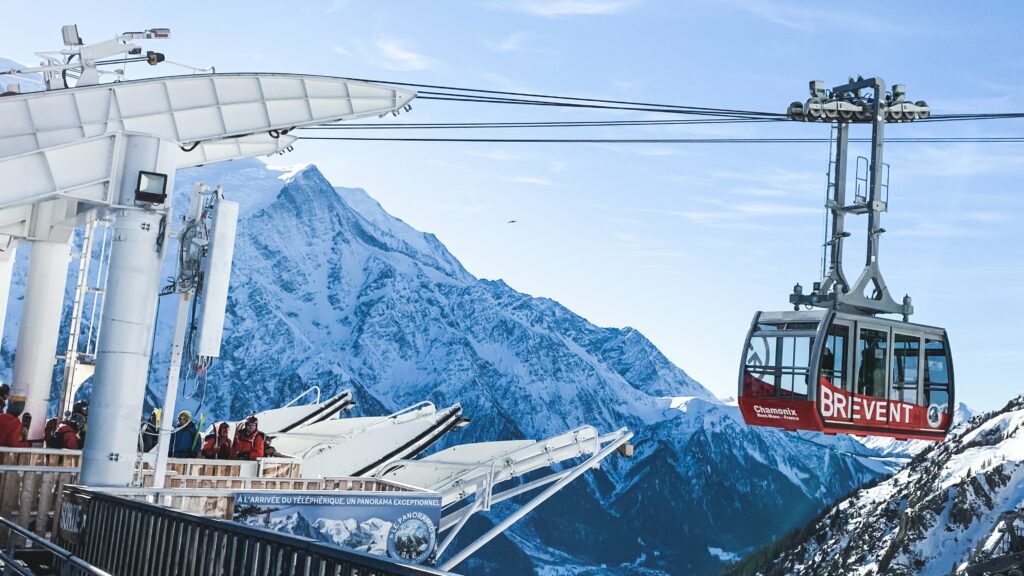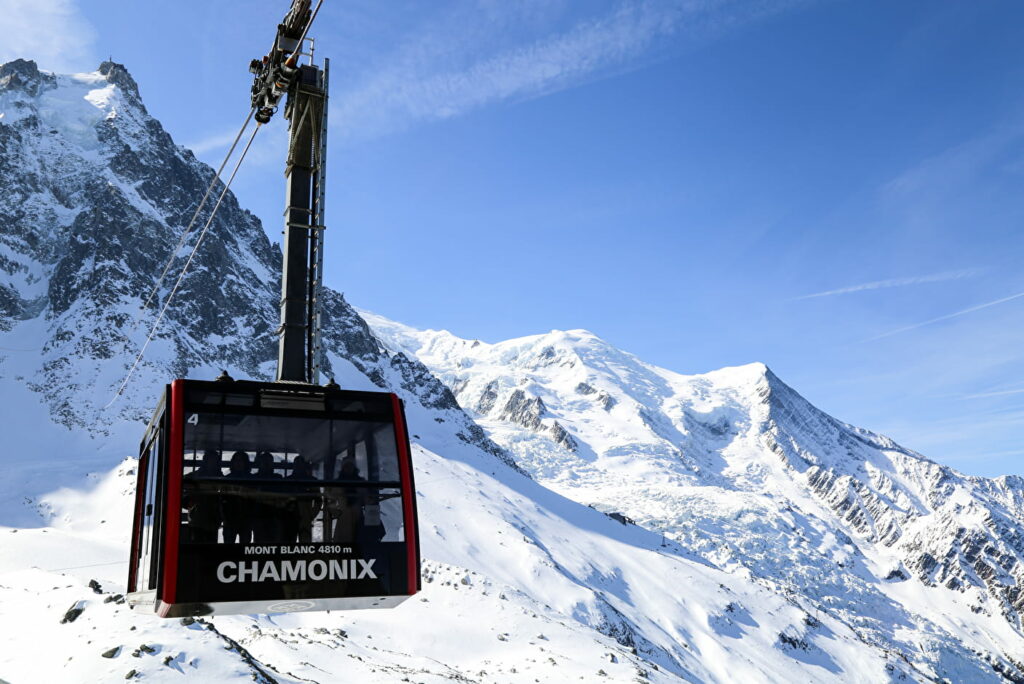The Aiguille du Midi, located in Chamonix in the Mont-Blanc massif, is one of the most famous peaks in the region, not only for its impressive height of 3,842 metres, but also for its cable car, one of the highest in the world.
The history of the Aiguille du Midi cable car is marked by technical daring and innovation.
READ MORE: The Vanoise Express cable car or how Paradiski was born
Construction of the cable car began in the 1920s. The idea was daring for its time: to create a means for visitors to gain easy access to heights previously reserved for experienced mountaineers.
The first section of the cable car opened in 1924
The project was initiated by Haute-Savoie councillor Lionel Terray, a renowned mountaineer, and financed by private investors and public funds.
The first section of the cable car, leading from Chamonix to Planpraz (at an altitude of 2,000 metres), was inaugurated in 1924. This achievement was already a significant technical feat.
However, reaching the Aiguille du Midi, situated much higher up, required even more advanced engineering and innovative solutions.

The project was interrupted by the Second World War, but resumed with vigour in the 1950s. The construction of subsequent sections posed major technical challenges, not least because of the extreme weather conditions and difficult terrain.
The workers had to work in perilous conditions, often suspended in the air, to install the cables and build the stations and pylons.
The Aiguille du Midi attracts thousands of tourists
In 1955, the last section of the cable car, from the Plan de l'Aiguille (at 2,317 metres) to the Aiguille du Midi, was completed.
This final section raised the construction to a new level of technical challenge, as it involved the creation of one of the longest pylon-free spans in the world at the time.
Since its completion, the Aiguille du Midi cable car has been modernised several times to improve safety, increase transport capacity and provide greater comfort for visitors.
It now attracts hundreds of thousands of tourists every year, who come to admire the breathtaking views of Mont Blanc and the surrounding Alps.
The Aiguille du Midi and its cable car remain symbols of human ingenuity, capable of overcoming the most daunting natural challenges to bring people closer to the summits of the mountains.

